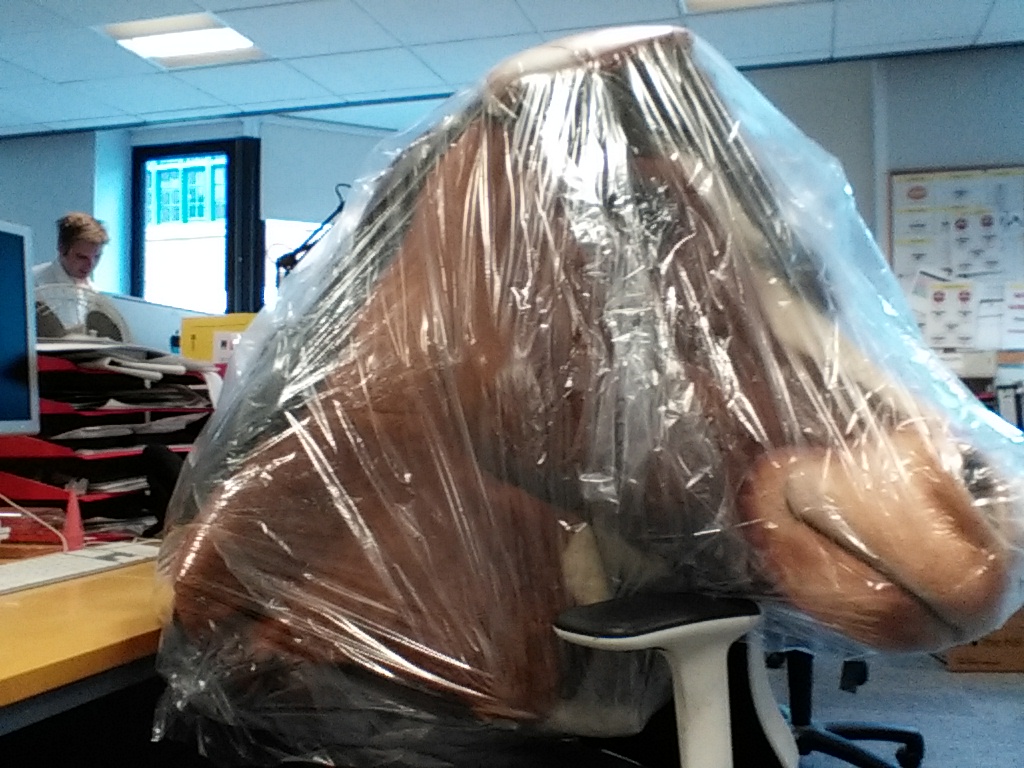Some years ago, Outa_Spaceman described Hooting Yard thus: “a world of heroic infants rubbing shoulders with tugboat captains, extravagantly bouffanted composers drinking and fighting in seedy dockside taverns, Jesuit priests lurking in kiosks on abandoned seaside piers, bat gods haunting abandoned potato research stations, huge grunting ogres drinking from cisterns in horrible caves, and where diktats are being issued to Community Learning Hubs by suburban shamans”. Rereading this, recently, I thought to myself, “How right he is!”. But then I thought, “Hmm. We have not seen many tugboat captains hereabouts of late!”. My thoughts are not always followed by exclamation marks, but those two were.
Casting around in my mind for a tugboat captain I could tell you about, I recalled the skipper of the tugboat Blavatsky. This fellow was neurasthenic and highly-strung, character traits which are quite undesirable in a tugboat captain, and led to several unfortunate episodes. Big majestic ships being tugged by the Blavatsky suffered a series of minor and major calamities, from dents below the plimsoll line to scuppering upon sandbanks to attacks by enormous flocks of deranged guillemots. These incidents were not always the result of the tugboat skipper’s mental weakness, but whether he was responsible or no, when the big ships’ captains gathered in conclave they laid the blame firmly at his door.
“He is neurasthenic and highly-strung,” they said, “He cannot be allowed to tug our ships.”
With no big majestic ships to tug, the Blavatsky lost its purpose, and so too did its skipper. He took to traipsing the deck of the tugboat wailing and keening, driving the rest of the crew crackers. Eventually his second-in-command, the science officer, took him aside, bundled him into a cabin, and gave him a talking-to. Like several seconds-in-command, he was half-Vulcan, with pointy ears, and he spoke with compelling logic.
“The Blavatsky is a tugboat, Captain,” he said, “And therefore it must tug something. If we cannot tug big majestic ships we will have to find something else to tug.”
“But what?, dammit, what?” yelled the skipper, who was clearly close to the end of his already frayed tether.
“Well, Captain,” replied his pointy-eared science officer, “It so happens I have been reading some back numbers of the Daily Pony Predations Digest. It seems there is, loose in the land, but happily close to the coast, an enormous squid named Neville Mossop. It is already responsible for slobberingly devouring one twee little pony, and logically one must assume it will go on to consume others in its awful hideous Lovecraftian manner. We can stop it, Captain. I suggest we send a landing party, capture the squid, drag it to shore, then attach it to our tugboat with chains, and tug it far out to sea so it can no longer prey upon ponies.”
“That’s a fantastic idea!” cried the skipper, and at once his mood lifted and he ceased keening.
Without further ado, he sent a landing party which captured the squid, dragged it to shore, attached it to the tugboat with chains, and tugged it far out to sea.
“This is terrific!” said the skipper, “We are tugging something, just as a tugboat must, if it is fit to be called a tugboat!”
But his joy was short-lived. For unbeknown to the skipper, far out at sea the enormous squid’s distressed mother was searching for her son. Mrs Chlorine Winslow Mossop was so gigantic a giant squid that she made Neville look like a mere minnow. And when she found him, she reared up from beneath the waves, towering over the tugboat, her tentacles thrashing violently, and from suckers on those tentacles she emitted an eldritch viscous goo that burned through the iron chains tugging her son as if they were wisps of straw, and she freed him. And then, with a horrible gurgling noise so loud it made the sun shake in the heavens, she slobberingly devoured the tugboat Blavatsky and its crew, in a single awful gulp.
It happened that at the very last second, just as he was about to be swallowed up, the skipper managed somehow to kick himself clear. He swam away, as the gigantic squid and her almost as gigantic son disappeared into the chthonic depths of the broiling sea. He swam and swam, until he reached a remote atoll. Exhausted, he clung to the rock and slowly, agonisingly, pulled himself up out of the sloshing sea. He was marooned, but no longer imperilled.
In spite of his highly-strung neurasthenia, the skipper was a resourceful fellow, and he kept himself alive by drinking rainwater and eating barnacles and the occasional guillemot which plummeted unaccountably from the sky. And he kept his mind busy by studying, from memory, Catholic theology, to the point where one day, several years after his maroonment, he felt able to ordain himself as a Jesuit priest.
And that, children, is the story of how the legendary Atoll Jesuit came to hold sway over a remote stretch of the vast and merciless sea. Amen.


